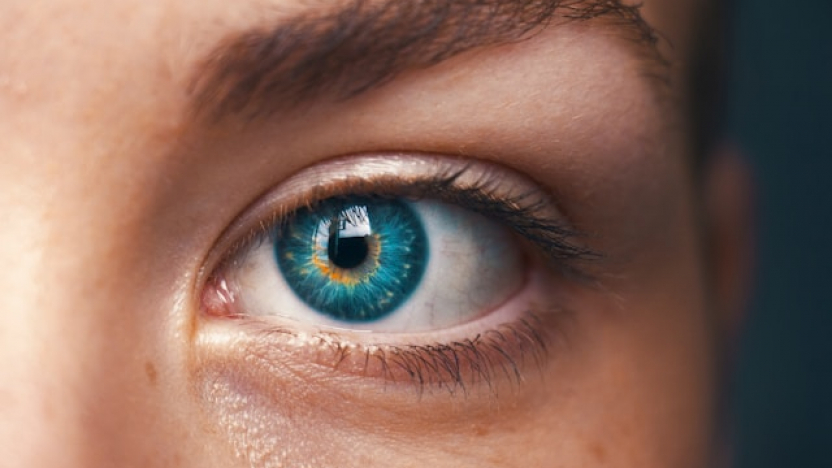AI and IP: Taking an intelligent approach to trademarks

At the ECTA Annual Conference last month, Ingrid Mennens, Managing Director of Novagraaf Belgium, shared her insights on the hot topic of AI and IP. Here, we summarise some of the key talking points from her presentation.
Traditionally, intellectual property (IP) has been powered by paper-based and manual tasks. However, over the past few decades, emerging technologies from faxes to the internet have helped to modernise this offline approach. As Ingrid Mennens, Managing Director of Novagraaf Belgium, shared in her presentation at the 42nd ECTA Annual Conference in June, artificial intelligence (AI) has an even greater potential to disrupt the IP profession from our ways of working to IP laws and regulations.
AI and IP: The rise of the machine
The potential of AI-based workflows to ease day-to-day administration, reduce risk and improve efficiency has been widely discussed. But did you know that AI has already been used at several stages of the trademark portfolio management lifecycle – and for many years?
Now that generative AI programs, such as ChatGPT, have caught the world’s attention in recent years, AI-based tools have become a hot topic for IP departments, with companies increasingly looking to involve AI at every stage of the trademark life cycle, from creation to registration and beyond.
Generative AI technology can not only harness data to increase insight, create reports, and generate first drafts of documents, contracts and emails, but it can also help IP professionals to communicate more effectively with a wide range of stakeholders, from internal product owners to creative agencies, external legal advisers and trademark offices.
However, integrating AI and IP does not come without its risks. Just as AI can be used to detect, prevent and fight counterfeits, for example, it can also facilitate the work of counterfeiters, copycats and other IP infringers.
AI and IP: What are the practical implications?
As Ingrid noted in her presentation, it would be impossible to cover all the relevant AI and IP applications in a single talk. Instead, she limited herself to some illustrative applications and notable talking points, and shared some considerations on the pros and cons, and the dos and don’ts from the perspective of a trademark attorney.
- AI and IP: Illustrative applications
One of the most popular areas for adoption of AI by the IP profession today is infringement monitoring and, particularly, infringement monitoring online.
AI already assists in identifying counterfeit patterns to help investigate and fight infringement. For example, AI such as YouTube’s Content ID helps to identify infringing content and reduce human workloads. Moving forward, improved image recognition capabilities could help identify potential infringements, while logo or design databases could be used to train AI to recognise infringing images.
In addition, AI can assist in monitoring user behaviour, raising alerts if there are any abnormalities, identifying larger networks of IP infringers, and undertaking risk analysis to detect suspicious and potentially abusive behaviour.
Conducting such processes manually is incredibly labour-intensive, given the plethora of online sellers, websites and social media channels exploited by unauthorised sellers. As with our own online brand protection platform, AI plays a vital role in managing the task of reviewing postings and identifying trademark infringement. Not only does the technology take significantly less time than it would take a human, but the use of AI to monitor trademark infringement also frees up personnel to focus on higher-value tasks.
- AI and IP: Balancing risk and reward
However, it’s also important to note that this type of AI technology can also be used by infringers. For example, generative AI can be employed to scan websites to identify the most popular products, copy packaging, trademarks and logos, map distribution routes, and even create look-a-like (or copycat) products.
“It will either be the best thing that’s ever happened to us, or it will be the worst thing. If we’re not careful, it very well may be the last thing.”
Stephen Hawking on the topic of AI (Brief Answers to the Big Questions)
- AI and IP: What could come next?
Alongside online brand protection, existing generative AI-based tools enable IP professionals to conduct clearance searches, classify goods and services, and even analyse case law. Tools are also emerging to support marketers and product owners to suggest names and draft logos. But can programs such as ChatGPT support IP professionals to do more?
Based on our tests, such tools can certainly create a workable first draft. For example, to prepare for her presentation, Ingrid prompted the tool to write arguments for an opposition procedure before the Benelux trademark office.
The brands at stake were for the opponent CHATCAT for cat food versus the applicant CHATDOG for books:
- + Assessment of similarity of the signs was good, following the established checklist of visual, phonetic and conceptual similarity.
- - However, the tool then invoked notoriety on its own initiative, and made a few strange associations.
As Ingrid commented at the event, AI is a machine and does not reason like a human being. For us, the link between reading books and pet food is not realistic. In other words, in making arguments, AI cannot fully (or not yet) replace the perception of the consumer.
AI neural networks are limited to logic, but humans possess different types of intelligence: the brain, the heart, emotional intelligence, body language, sensitivity and precognitions.
The need for specific and trustworthy AI and IP tools
Crucially, non-IP-specific tools such as ChatGPT, are able to assess the market, competition or the physical nature of the product, so its analysis of the risk of confusion can only be limited to the semantic field. While AI could check if the classes were similar, it could not yet give a viable answer.
If there is no data available about the request information, such tools have also been shown to ‘invent’ or ‘hallucinate’ answers, which is especially problematic if lawyers go on to rely on them in court.
If AI is to support the IP profession, we need access to specific AI and IP tools, based on high-quality algorithms and IP-specific training. Until the training is thorough enough, the output will not be reliable.
AI and IP best practices
Patent and trademark offices, such as the EU IP Office (EUIPO), have issued AI policies to safeguard use of AI in the IP profession, including ensuring security, confidentiality and data protection. Among other points, the EUIPO guidelines for the use of generative AI, include the following helpful dos and don’ts:
- Do not share non-public data with a generative AI model available online
- Assess critically any response for biases and factual errors
- Sensitive and critical data should be reviewed especially
- Respect IP rights, especially copyright
- Never share the outcomes of generative AI (LLM models)
- Do not copy-paste data in decisions and communications
While the EUIPO considers AI a beneficial tool – for example, the Office recognises that it could help create more harmony and consistency in decisions – it stresses the need for a ‘human-centric’ approach. Legal professionals should be involved to verify that AI is employed correctly (and in conformity with the AI policy), including ensuring that examiners decide on every decision and communication.
What does AI mean for the IP profession in the long term?
While studies show that AI will inevitably impact the job market for legal professionals, such an impact will not necessarily be a negative one. In fact, the legal profession could be positively impacted by AI, given its ability to speed up and automate many time-consuming and lower-value tasks. By providing IP professionals with the ability to analyse data and create first drafts for review, AI and IP specific tools will free us all up to concentrate on strategic, legal advice.
A machine can never replace the human factor in high-level or face-to-face tasks, such as during critical negotiations or for customer support. However, AI can and is already reducing the risk, time and effort required for time-consuming administrative (‘back office’) matters, such as data entry, correspondence management, and the creation of reports and case law summaries.
- To find out more about AI and IP, download ‘Beyond the Hype: How Technology is Transforming IP’ (an IP Industry Outlook Report by the Questel group).
- To find out more about how we use AI and automation in our online brand protection tool, speak to your Novagraaf attorney or contact us below.
This article is based on a presentation given by Ingrid Mennens, Managing Director of Novagraaf Belgium at the ECTA Annual Conference in June 2024.
